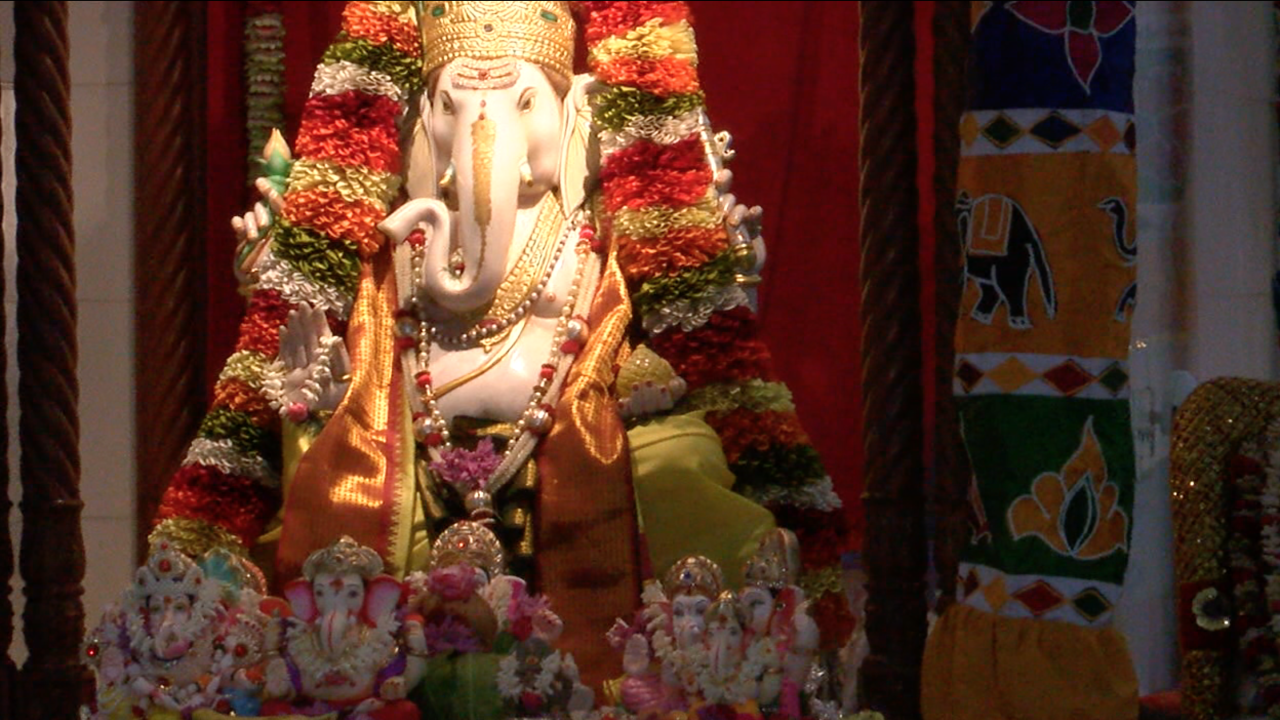BAKERSFIELD, Calif. (KERO) — The pandemic changed the way a lot of us do things. Even the way some communities celebrate festivals. But as places open up again, 23ABC’s Mythili Gubbi brings us one story from an Indian temple in Bakersfield about how they celebrated a special festival.
In Hindu culture, Ganesh Chathurthi, the festival for the elephant god of beginnings or Lord Ganesha, symbolizes the destruction of all obstacles. Ganesha is also known as the god of knowledge and wisdom. In Kern County, Indians, even though far from home, got to celebrate this festival in their own special way.
What is Ganesh Chaturthi?
Ganesh Chaturthi, also called Vinayaka Chavithi, is an auspicious Hindu festival which is celebrated for 10 days every year. The festival is celebrated in the Bhadra month as per the Hindu calendar which generally falls in mid-August to September. It marks the birthday of the beloved elephant-headed Lord Ganesha.
Ganesha is known as the God of wealth, sciences, knowledge, wisdom and prosperity, and that's why most Hindus remember him and seek his blessings before starting any important work. Lord Ganesh is known by 108 different names like Gajanana, Vinayaka, Vighnaharta among others.
This festival is celebrated with great devotion and joy by Hindus throughout the world. In India, it is majorly celebrated in states including Maharashtra, Gujarat, Goa, Madhya Pradesh, Karnataka, and Telangana.
On the first day of the festival, people bring statues of Lord Ganesha into their homes. Usually made of mud or clay, they decorate them, prepare special food and sweets, and pray.
Komal Desai, the vice president of the Hindu Temple of Kern County, said on the last day of the celebrations, people gathered at the temple and brought their statues of Lord Ganesha, which were placed on a cart to celebrate that god being present.

“So if we imbibe the values that Lord Ganesha stands for, we can ourselves overcome obstacles,” said Desai.
Dancing, singing, and festivities continued as people also put sweets on the cart as a symbolic way to offer them to Ganesha.
Typically in India, communities come together and place the statues in water, to symbolize letting Ganesha go until the festival next year. That’s when a new idol is sculpted again from mud and worshipped, and the cycle continues.

“And the symbolic meaning of that is we all come from the five elements of nature and we are going back to the same five elements of nature,” explained Desai.
The priest then lit a lamp and moved it around driving positive energy. The light is used to drive away the darkness, negativity, and troubles, and wish for goodness and prosperity.
Even though this year’s celebration looked different with masks and slightly scaled-down, the main purpose was to bring the community together.
Desai says the temple has safety precautions in place and tries to make sure people can safely gather there.
“We are trying to keep our traditions going, but at the same time, keeping the safety guidelines and everybody else’s health and wellness in mind,” said Desai.
She believes that community events and having people celebrate festivals can help people feel closer to where they come from and their homes overseas, and to each other. Especially during difficult times like these.
“I think temples, or any places of worship and gathering like this, not only provide a place to come and practice your faith, but it also gives a lot of support to people. You know you don’t feel alone. You have a sense of community, a sense of belonging.”
If you want to get involved with the Indian community and learn more about the festivals, you can find more information about the Hindu temple online.




